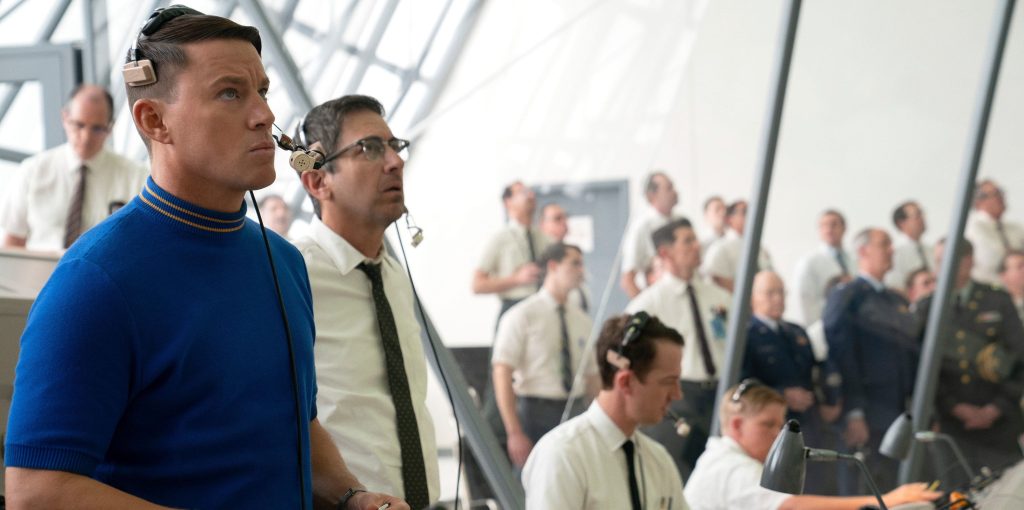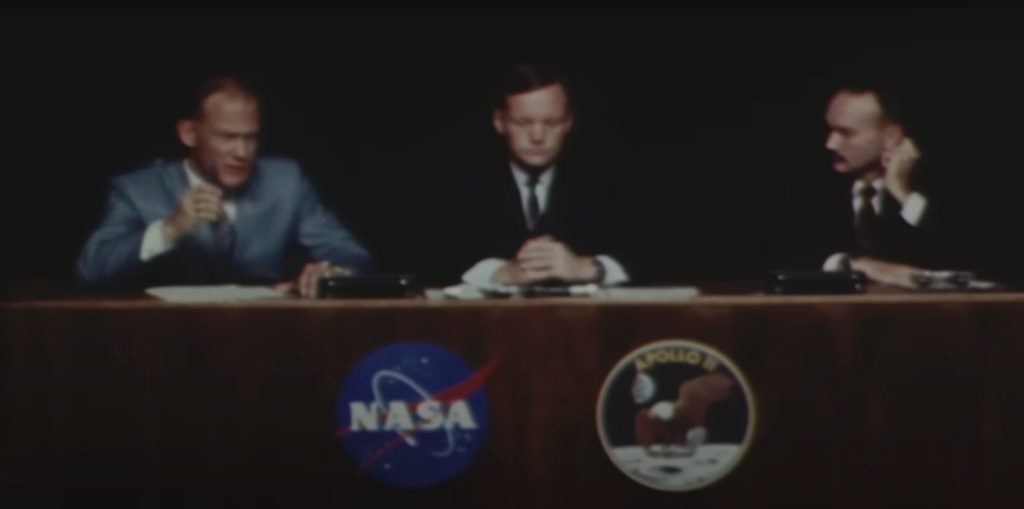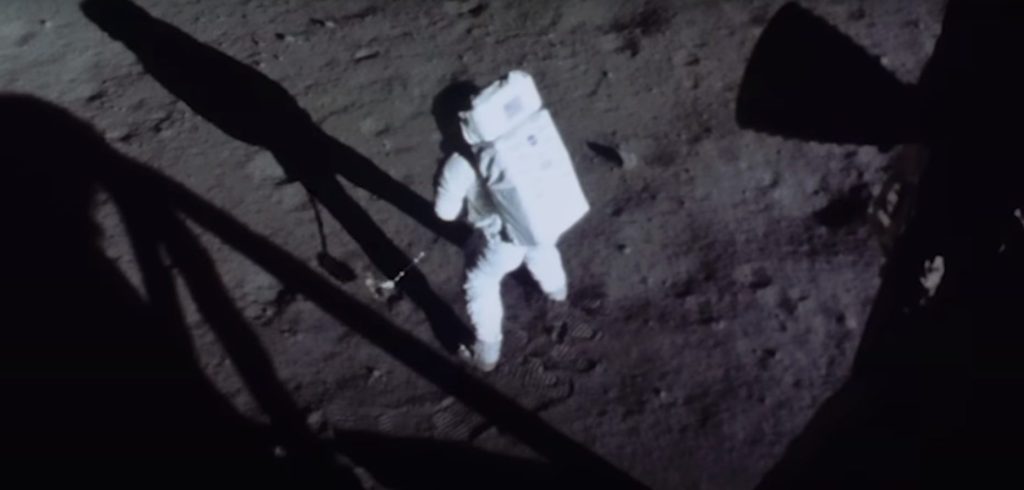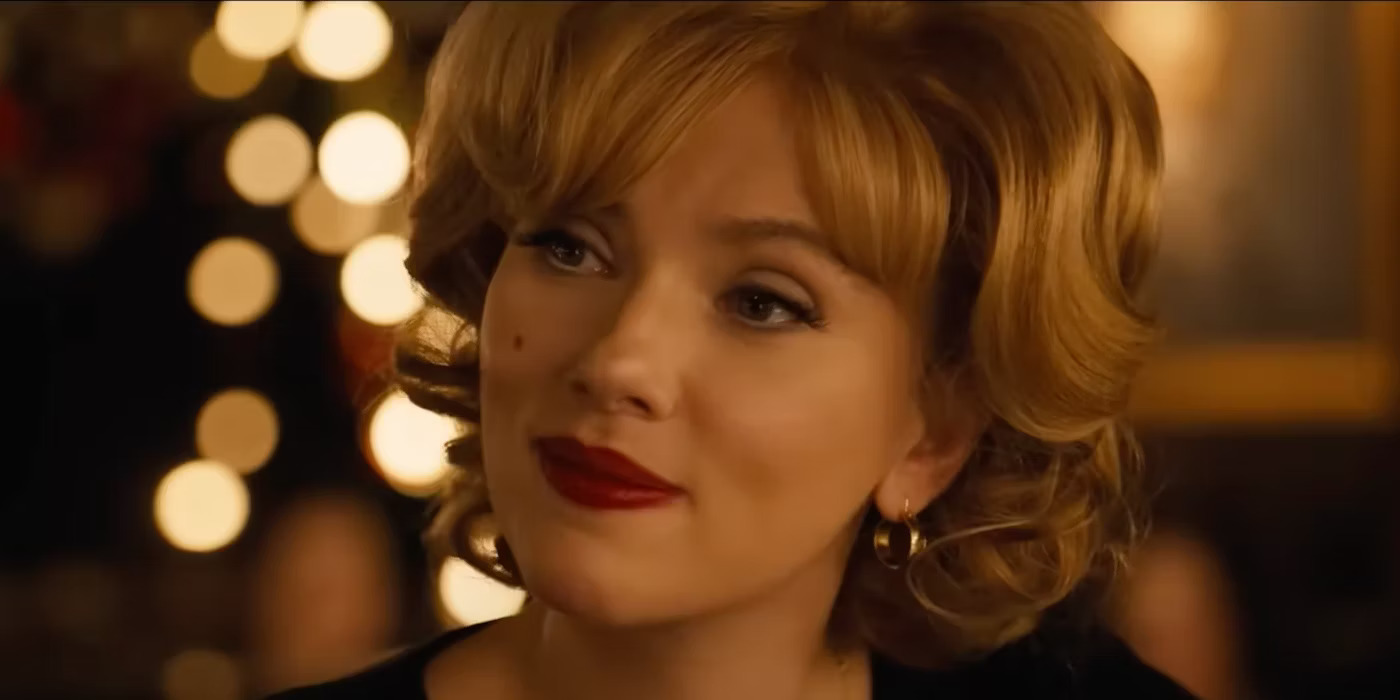Unraveling against the backdrop of the 1960s, the comedy film, ‘Fly Me to the Moon,’ depicts a tale of how opposites attract as Cole Davis, the director of NASA’s Apollo 11 mission, and Kelly Jones, the new marketing specialist at the space agency, develop a romantic interest in one another despite their differences. After public perception wanes in the efforts to send humans to the moon, NASA has to bring in Jones to help fix their image and build a fake moon landing set where they can stage their mission should it go awry. It creates a bubbling tension between her and Davis as they step on each other’s feet while growing closer through their interactions.
With Greg Berlanti at the helm, the narrative blurs the line between the nostalgia of the space race era and a blossoming love story set within the confines of one of the world’s leading space exploration institutes. Davis and Jones are people from different worlds. Yet, their universes collide in their monumental efforts to be the first to facilitate the arrival of humans on the moon, be it through legitimate or illegitimate means. Consequently, the story’s suggestion of the moon missions being faked offers an intriguing history and reality worth delving into to determine if it’s based on true events.
Fly Me to the Moon Draws Upon Certain Elements of Reality to Offer a Fictional Tale
‘Fly Me to the Moon’ is a fictional story loosely inspired by the seminal 1969 Apollo 11 mission to send astronauts to the moon for the first time in history. The world of Davis and Cole is driven by a script Rose Gilroy developed from a story by Bill Kirstein and Keenan Flynn. Due to its historical background, comparisons with reality are a natural point of contention for the comedic tale. However, the film’s fictional conceit plays upon the popular conspiracy theory that claims the moon landings were ultimately a hoax staged by NASA to convince people that the space race was well and truly over in a victorious landslide against the Soviet Union.

In an interview with PEOPLE, Greg Berlanti said, “The inspiration for this story, was to craft a big, fun, smart original movie around whether or not the American government could have possibly faked the Apollo 11 moon landing, which is still the most-watched live TV event in the history of the world and has since become one of the most talked about conspiracy theories.” The screenplay takes motivation from the notable achievements in space travel while exploring a unique made-up perspective that is fun and engaging to the bold and satirical comedy between the two central characters of Cole Davis and Kelly Jones.
Public Perception Was a Real Sector of Focus During the Moon Landing Era
Despite then-President John F. Kennedy’s 1961 speech to further space exploration at the Rice University Stadium in Houston, Texas, the public treated the moon landing venture with skepticism due to its perceived unfeasibility. Matters were also complicated by the ongoing Cold War that was sapping the enthusiasm and drive of many who still lived under the threat of nuclear armageddon or an all-out war breaking out any day. Thus, to help them generate interest and engagement, NASA’s public relations team played a pivotal part in infusing the necessary energy and transparency into the Apollo 11 mission.

In David Meerman Scott and Richard Jurek’s book titled ‘Marketing the Moon: The Selling of the Apollo Lunar Program,’ Marketing Executive Jurek wrote, “If it had been run like it was under the military, we would not have had that sense of drama, that sense of involvement, that sense of wonder, that reveal.” The push for opening communications to the broader public was met by some opposition as many felt it was unnecessary to reveal everything.
However, when the landing date drew closer, the PR officials levied for the live broadcast of the lunar landing to the general populace, a move that ultimately paid off despite its naysayers. The work done by the PR team helped engage millions of people in the efforts of NASA and popularized space exploration in the public imagination. The film reflects some of these elements faithfully while also exaggerating some others. However, brand imagery and public awareness did play a massive role in the lead-up to the moon mission.
Fly Me to the Moon Depicts a Ruse Behind the Moon Landing
While drawing upon sources of real history, the narrative of ‘Fly Me to the Moon’ exercises its creative license by showcasing certain underhanded tactics employed by NASA that depart from reality. At the center of the piece lies the task given to Kelly Jones to build a fake moon stage where they can recreate the landing should the real one fail. This portion of the narrative is based upon a conspiracy theory that has raged in public discourse ever since the first Apollo mission and the subsequent trips to the moon by other astronauts. However, according to reports, the evidence surrounding these claims has been paper thin.

“They are some of the most famous images in history,” said Greg Berlanti while discussing the efforts the production crew had to take to recreate the moon landing as a fake mission, “and we needed to match them completely — but in a way they could have only done in 1969.” Although the film showcases some unethical practices undertaken by NASA, its comedic approach infuses these fictitious claims with a sense of parody rather than real-life events.
The whole point is to provide the correct mix of history and mockery in its nostalgia-fueled ride through the stars, as seen through the eyes of its two central protagonists. Therefore, while ‘Fly Me to the Moon’ relies upon a landmark achievement in human history as its narrative background, it also spins a fictional acccount of those elements to provide a fresh story that suits the romance at its center.
Read more: Best Historical Movies on Netflix


You must be logged in to post a comment.